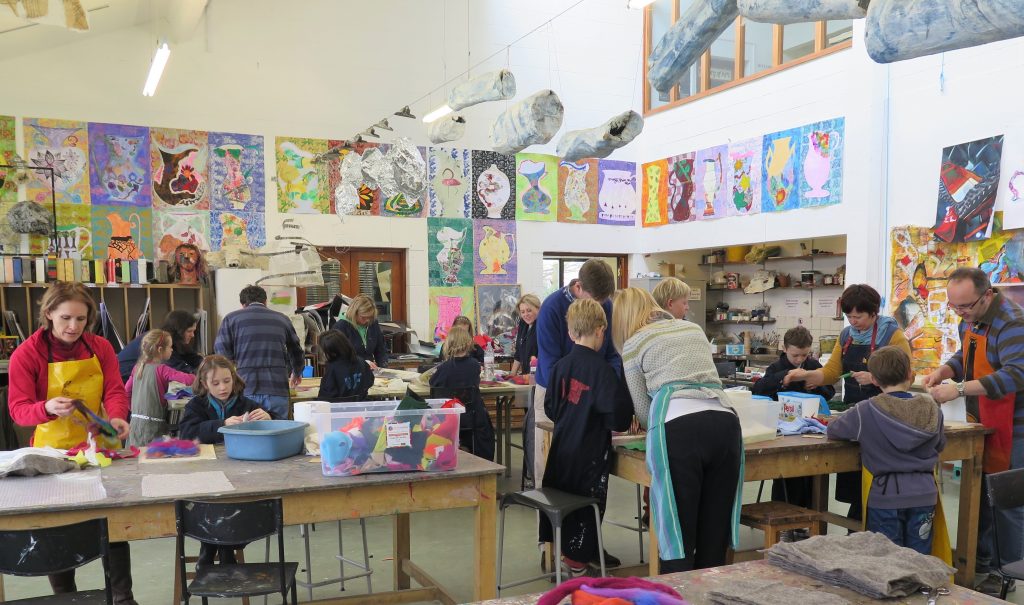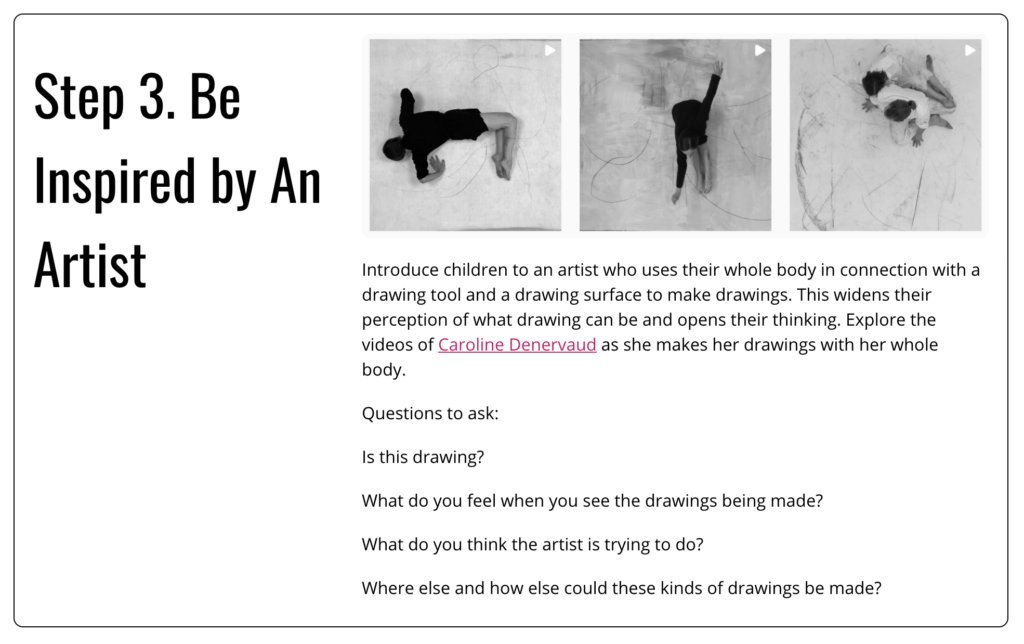Scaffolding Projects
By Paula Briggs
In this post we address the question ‘How do we Balance Ongoing Skill Development with the Novelty of Fresh Projects?’
At AccessArt, we believe that the key to balancing skill development with fresh projects is by scaffolding projects with sketchbooks and drawing activities. Find out more about our approach below.

In the AccessArt Primary Art Curriculum we have created 36 pathways, each one lasting between 6-8 weeks for pupils in primary aged settings. Within these pathways we have ensured that we’ve built in really rich and exciting exploration of materials, disciplines and concepts, underpinned by drawing and sketchbooks throughout. To accompany the curriculum we have also created supporting documents such as a revised Progression Plan which demonstrates how, when taken as a whole, you can be sure to build a really rich and exciting creative curriculum.
Because every school is different in the amount of time and resources it can commit to art, we have created 4 different versions of the Primary Art Curriculum: A Full Curriculum which covers one session of art in school per week across the year; The Split Curriculum for schools who swap between art and D&T; The Mixed Year Curriculum for school who teach mixed year groups; The Split and Mixed Year Group Curriculum, for those schools who divide time between art and D&T, and who teach in mixed classrooms.
We want to enable all teachers to feel that they are able to build their knowledge and experience of art and therefore have supplemented the curriculum with ongoing CPD, to help improve individuals understanding and skillset. We record the majority of our sessions which can be found here.
There are two important elements within the AccessArt approach which can be found across all of our pathways. These are:
Encouraging learners and teachers to take a Journeyful Approach. You won’t find prescribed teaching ideas and pre-defined outcomes in the AccessArt Curriculum. Instead our emphasis is on journeyful teaching and learning which empowers teachers and pupils to become confident creative decision makers. Teachers and pupils can GROW with our curriculum, and to help that happen we have created clear structures and access to resources which help teachers understand the WHY as well as the HOW.
Scaffolding all visual arts activities with drawing and sketchbook skills. Each pathway tells a story / forms a journey, for both teacher and pupil. Each pathway follows a particular format which promotes excellent teaching & learning:
-
Warm-up: Artists: Activity: Crit / Reflection
-
Artists: Materials: Activity: Crit / Reflection
-
Challenge or Brief: Artist: Activity: Crit / Reflection
Each of these elements are underpinned by sketchbook work and drawing, with tasks such as Show Me What You See and Visual Notes featuring in all pathways. By starting these practises (which can be challenging at first) in KS1, it will ensure that knowledge is acquired through experience throughout their primary education, guaranteeing the learning is owned by the pupils.
Both drawing and sketchbook work also involve a slowing down – a making time for. What exactly you are making time for will be revealed along the way – and will probably be as important, if not more important, than the thing you thought you were doing (i.e. the project)!
Taking or enabling a journeyful approach means creating space around and within a project to encourage learners to think around the subject area. Being journeyful means finding time for serendipity, accident, and personal discovery within a thoughtful structure. It also means making time for fallow time, or for things to go wrong, – essential parts of the creative process – so that we can enable children to take creative risks. Think of children enabled to discover their own pathway via a meandering walk through the woods, noticing things along the way, with room for personal diversions and sharing amongst the group, rather than a direct and swift bus ride from A to B.
You can find out more about what we mean by a journeyful approach here, but in this post we will think a little more about how we can use scaffolding to support and expand the projects in the AccessArt Exemplar Plan.
How Do We Scaffold Creative Projects?
AccessArt advocates using creative projects to help give focus to an exploration of new materials, techniques, and concepts. Most importantly, creative projects keep visual arts learning fresh and inspiring – there is always a new start with new stimuli and ideas.
But AccessArt also advocates scaffolding creative projects with key elements which will help make the creative project all the richer and more rewarding, and also provide ongoing opportunities for skill development. Here are a few tips about how to scaffold a creative project, and why.
-
Balance the novelty brought through creative projects with time spent practising drawing skills. Use warm-up drawing exercises and icebreakers at all stages of a project to help pupils slow down their journey and open minds. Use drawing as a tool to help deepen and broaden understanding of ideas within the project. Don’t forget drawing can be used to help pupils see, discover and share.
-
Make time for sketchbooks. Time exploring is never wasted, and pupils will return to the main project with a richer and more personal understanding. Think of sketchbooks as the stretchy glue between the learner, the project and the world. Use sketchbooks before, during and after a project. And don’t forget sketchbooks aren’t just for sketching – they are also for collecting, researching, noticing, testing, thinking and reflecting.
-
Finally, explore the work of a diverse range of artists to help feed imaginations. Look at the work of other artists so that you can deepen understanding of the artist’s work, be open to the different roles artists have within society, and understand the relevance of their work to you.
Weave these activities within the main creative project. As your experience as a facilitator grows, you will learn when it is time to freshen things up with a drawing ice-breaker, or realise that children need more sketchbook time to help them connect to a project. Think of the activities which you introduce to scaffold a project as not just supporting the project, but feeding it too.

